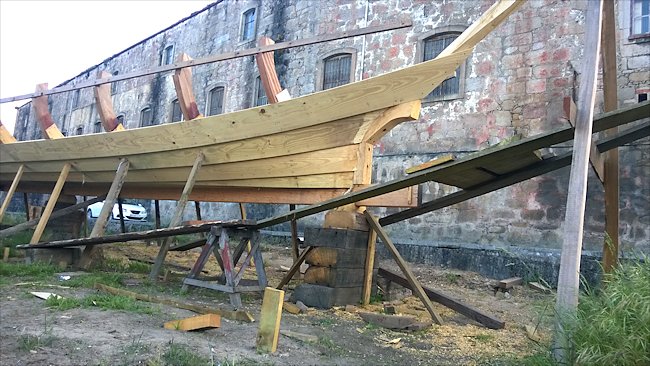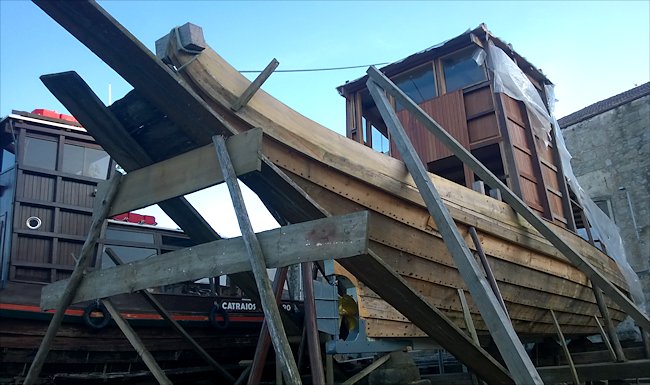Traditional ship-building on the banks of the River Douro
On the western end of Porto's Southbank river frontage you will find some old-fashioned shipyards. For hundreds of years Porto has used the Douro River to send ships laden with wines and other goods out into the Atlantic Ocean to trade with other countries. To do this they needed a regular supply of new merchant seagoing ships.

Traditional ship-building on the banks of the River Douro in Porto
When a new ship was commissioned it was built on the river bank. Modern dry docks were not used in Porto. The traditional shipbuilding method can still be seen today. A wooden slipway has been built from the road down to the river. It consists of a grid of big planks.
The carpenters build a frame of wood to support the hull of the ship. First the wooden rib's of the boat hull are cut, shaped and put in the correct position. Then long planks of wood that have been aged are steamed into shape and fixed to the wooden ribs with nails.
This clinker built shipbuilding method has been used for over 1000 years. The Vikings uses this method to build their famous longships. It is a privilege to be able to see this traditional maritime craft still being used today. It is like you have been transported back in time and are witnessing mediaeval craftsmen at work.

Traditional ship-building on the banks of the River Douro in Porto
Once the hull is complete the decking is added and then the upper the carpenters start work on the masts, ships wheelhouse and passenger seating. Marine engineers install the engine once all the woodwork has been completed
Finally it is painted and varnished before it is blessed by a priest and launched down the slipway into the river Douro. I hope this traditional way of building ships is continued in Porto and it is not modernised. It is so rare nowadays to find skilled craftsmen building ships with their bare hands out of local wood.
Travel books

